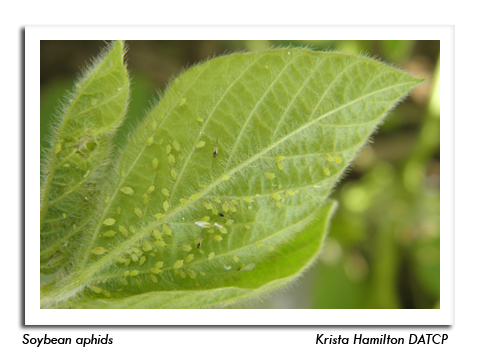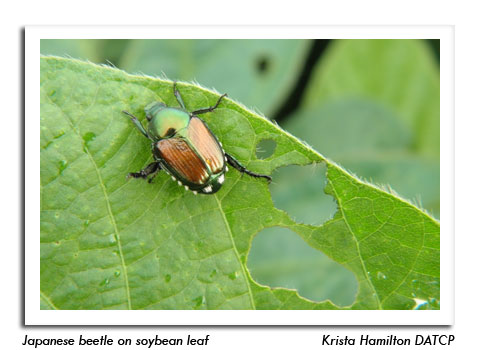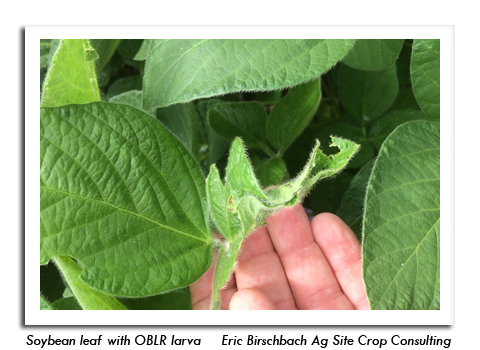
 |
|
|
Soybeans
Volume 61 Number 12 Date 07/21/2016 SOYBEAN APHID - Colonies on reproductive soybeans are low for late July. The average count in 45 fields sampled from July 14-20 was less than three aphids per plant. The highest average documented to date was only 18 aphids per plant in the Holmen area of La Crosse County. As previously mentioned, localized hot spots of several hundred aphids per plant are not unusual within some fields, but field-wide averages are still extremely low, emphasizing the need for thorough scouting before control decisions are made. Treatment is neither economical nor advisable until the threshold of 250 aphids per plant on 80% of the plants has been exceeded. Once again, aphid counts have not surpassed this level in any soybean field surveyed by DATCP this season. JAPANESE BEETLE - This pest continues to cause light to moderate (5-15%) defoliation of soybeans, particularly along field margins. Infestations were noted in Dane, Dunn, Chippewa, Columbia, Green, Jackson, Monroe, Richland, Rock, La Crosse, Trempealeau and Winnebago counties this week. The economic threshold for Japanese beetle and other leaf feeding soybean pests decreases to 20% defoliation between bloom and pod fill. Spot treatment is an acceptable form of control for fields with the heaviest injury occurring in the perimeter areas. OBLIQUEBANDED LEAFROLLER - Late-instar larvae remain common at low levels in soybean fields as far north as Chippewa County. Survey observations suggest that this generalist leafroller, with an extremely broad host plant range that includes fruit trees, hardwoods, and some field crops, is unusually abundant this season. Adult moths should begin emerging before the end of the month. -- Krista Hamilton, DATCP Entomologist 



|
|
|